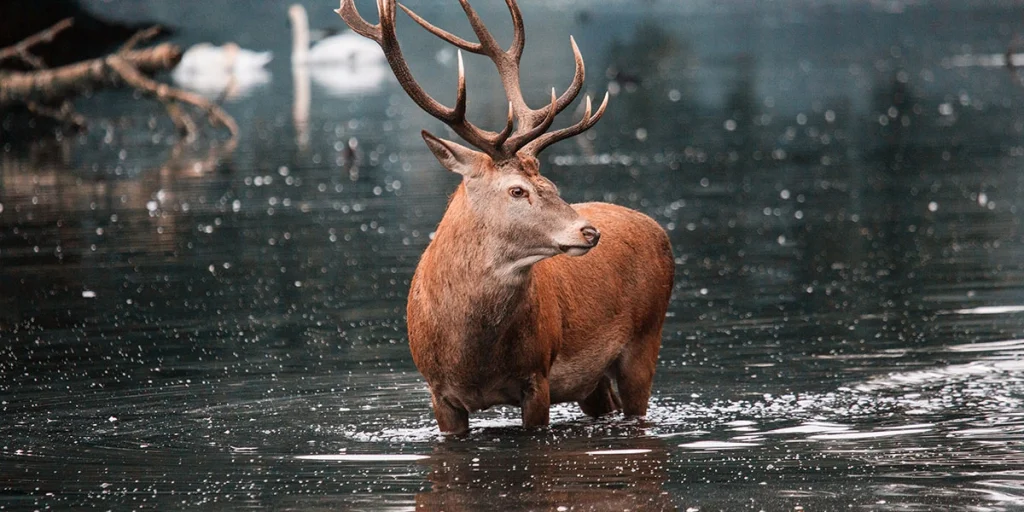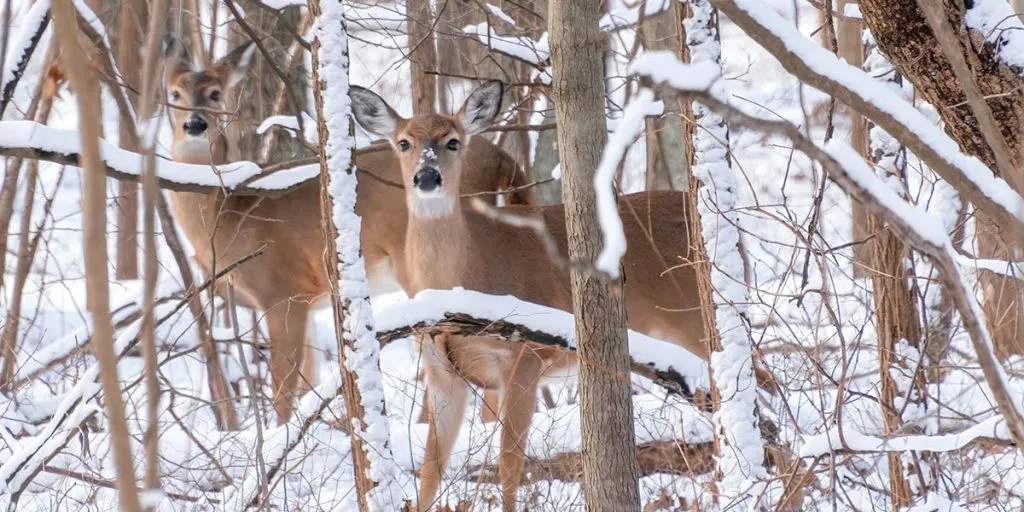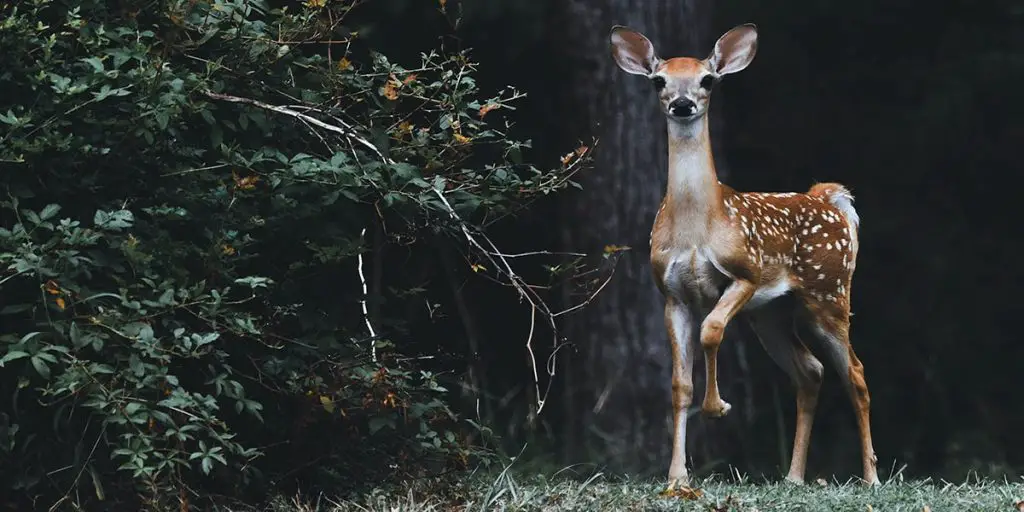Deer are not fish. Land animals are not necessarily optimized for water-related matters like swimming. But when a deer needs to swim across a lake, pond, or river, the animals will not hesitate to do so. And they are actually quite good at it.
Generally, deer are considered very capable swimmers. Their strong leg muscles allow deer to skillfully swim across bodies of water, including rivers and lakes. They can swim for several miles in cold water. Oil-producing glands on their skin help make their fur water repellent and protect them against hypothermia.
Deer can reach speeds of up to 15 mph (24 km/h) while swimming. They will be faster in bodies of water where their powerful legs are fully submerged and not touching the bottom. In shallow parts where the animals are able to stand up, they use their long legs to wade through the water.
Why Deer Swim (They Don’t Like It)
Most deer have the ability to swim from a young age. Fawns learn how to cross a body of water as soon as they grow up, because it is an integral part of their survival strategy. While deer are adapted for swimming, there is always the risk of exhaustion, drowning, or being eaten by other wildlife while being helpless in the water.
Crossing a river is, therefore, a highly risky and dangerous activity for any land animal. That’s exactly why a deer will generally avoid water if the opportunity exists. They will only choose to swim for three main reasons:
- To escape a predator
- To be able to access food
- To find a mating partner
Can Deer Swim Across A River?
A deer is a very strong swimmer that is easily capable to swim across a river. Even when the current of the river is strong and the water is relatively deep, most deer will be able to cross the body of water without any problems. A healthy adult deer is able to swim against the river current.
While the animals have the strength and willpower to cross rivers, there are always hidden dangers to such a crossing.
They don’t really have to fear the cold water or current, but a deer is mostly helpless in the water. They can swim fast, but not fast enough to avoid a potential predator. Humans on boats of all sizes also pose a risk, as they sometimes won’t be able to outswim them.
The YouTube video below clearly shows the fear in the eyes of a swimming White-tailed deer, who attempts to cross a fast-moving river:
Can Deer Swim Long Distances?
A healthy, well-fed deer is able to cover long distances in the water. Most common deer species are able to swim for several miles across rivers, lakes, ponds, or even parts of the ocean. They sometimes swim toward islands to find food or shelter, which can be up to 10 miles of continuous swimming.
Young fawns or weakened deer obviously don’t always have the ability to swim very far. After the scarce and cold winter months, most deer will need to gather more strength before a long water crossing can be made. Even if they can, a healthy deer will need to have a good reason to cross large bodies of water before doing so.
In the wild, the main goal of any animal is to preserve as much energy as possible. As mentioned earlier, there are only a few things that can motivate a deer to swim very far. These motivations can be summarized as the ‘three motivational F’s’, being fear, food, or f***ing… You know what I mean.
Deer Adapted To Swim In Cold Water
Have you ever noticed how deer are seemingly unbothered by an extremely cold dip in a lake or river? That’s not because they are immune to cold water, but because the animals have evolved to protect themselves from it to some degree.
As mentioned earlier, deer have oil-producing glands on their skin that shield them from the cold. The fur of the animals is covered with this oil, which gives them some degree of insulation. It also helps trap air in the fur, giving the thick fur hairs some buoyancy.
This ‘floating ability’ gives the animals some more thrust and less friction in the water, allowing them to move through a river or lake more easily. Not only do species of deer have the ability to trap air in their oily fur, their relatives also have this ability. These include reindeer, elk, and moose species.
Prevent Deer From Entering Your Swimming Pool
It is not uncommon for humans to find a deer in their swimming pool. Not because the animals want to take a quick dip to cool off, but probably because something started them and they got scared. As a responsible homeowner, you want to prevent wildlife from swimming in your pool, both for hygiene reasons and to protect local wildlife.
The natural instinct of a deer is to take to the water when frightened. In nature, the animals use swimming as a means to escape dangerous situations. In the majority of cases, this is also how deer end up in a human swimming pool.
In most cases, the animals do not have the ability to get out of the pool themselves. Unfortunately, a lot of dead deer are still commonly found in swimming pools. The edges are too steep and the water is usually too deep for them to jump out of a pool. To prevent this from happening, you can do the following:
- Remove any food sources to prevent wildlife from wanting to enter the pool area;
- A lot of local laws require pools to be fenced off, but you should also install netting or a pool cover to prevent accidents;
- Install movement-activated automated sprinklers to scare off any unwanted wildlife near the pool;
- Use natural repellents like hot pepper scents to scare away wildlife.



